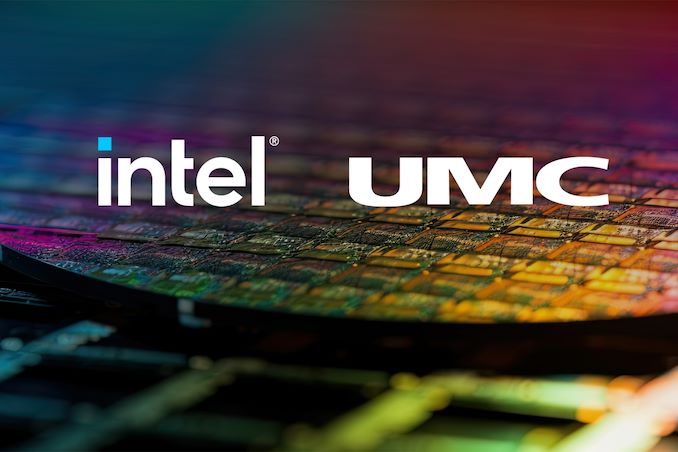
Intel and UMC on Thursday said they had entered into an agreement to jointly to develop a 12 nm photolithography process for high-growth markets such as mobile, communication infrastructure, and networking. Under the terms of the deal, the two companies will co-design a 12 nm-class foundry node that Intel Foundry Services (IFS) will use at its fabs in Arizona to produce a variety of chips.
The new 12 nm manufacturing process will be developed in Arizona and used in Fabs 12, 22, and 32 at Intel's Ocotillo Technology Fabrication site in Arizona. The two companies will jointly work on the fabrication technology itself, process design kit (PDK), electronic design automation (EDA) tools, and intellectual properties (IP) solutions from ecosystem partners to enable quick deployment of the node by customers once the tech is production ready in 2027.
Intel's Fabs 12, 22, and 32 in Arizona are currently capable of making chips on Intel's 7nm-class, 10 nm, 14 nm, and 22 nm manufacturing processes. So as Intel rolls out its Intel 4, Intel 3, and Intel 20A/18A production at other sites and winds down production of Intel 7-based products, these Arizona fabs will be freed to produce chips on a variety of legacy and low-cost nodes, including the 12 nm fabrication process co-developed by UMC and Intel.
While Intel itself has a variety of highly-customized process technologies for internal use to produce its own CPUs and similar products, its IFS division essentially has only three: Intel 16 for cost-conscientious customers designing inexpensive low-power products (including those with RF support), Intel 3 for those who develop high-performance solutions yet want to stick to familiar FinFET transistors, and Intel 18A aimed at developers seeking for no-compromise performance and transistor density enabled by gate-all-around RibbonFET transistors and PowerVia backside power delivery. To be a major foundry player, three process technologies are not enough; IFS needs to address as many customers as possible, and this is where collaboration with UMC comes into play.
UMC already has hundreds of customers who develop a variety of products for automotive, consumer electronics, Internet-of-Things, smartphone, storage, and similar verticals. Those customers are quite used to working with UMC, but the best technology that the foundry has is its 14 nm-class 14FFC node. By co-designing a 12 nm-class process technology with Intel, UMC will be able to address customers who need something more advanced than its own 14 nm node, but without having to develop an all-new manufacturing process itself and procuring advanced fabs tools. Meanwhile, Intel gains customers for its fully depreciated (and presumably underutilized) fabs.
The collaboration on a 12 nm node extends the process technology offerings for both companies. What remains to be seen is whether Intel's own 16 nm-class process technology will compete and/or overlap with the jointly developed 12 nm node. To avoid this, we would expect UMC to add some of its know-how to the new tech and make it easier for customers to migrate to this process from its 28 nm-class and 14FFC offerings, which guarantees that the 12 nm node will be used for years to come.
Intel's partnership with UMC comes on the heels of the company's plan to build 65nm chips for Tower Semiconductor at its Fab 11X. Essentially, both collaborations allow Intel's IFS to use its fully depreciated fabs, gain relationship with fabless chip designers, and earn money. Meanwhile, its partners expand their capacity and reach without making heavy capital investments.
"Our collaboration with Intel on a U.S.-manufactured 12 nm process with FinFET capabilities is a step forward in advancing our strategy of pursuing cost-efficient capacity expansion and technology node advancement in continuing our commitment to customers," said Jason Wang, UMC co-president. "This effort will enable our customers to smoothly migrate to this critical new node, and also benefit from the resiliency of an added Western footprint. We are excited for this strategic collaboration with Intel, which broadens our addressable market and significantly accelerates our development roadmap leveraging the complementary strengths of both companies."







